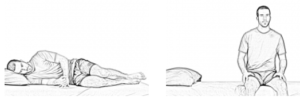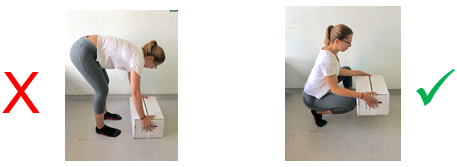- Reference Number: HEY594-2024
- Departments: Neurology and Neurosurgery
- Last Updated: 3 June 2024
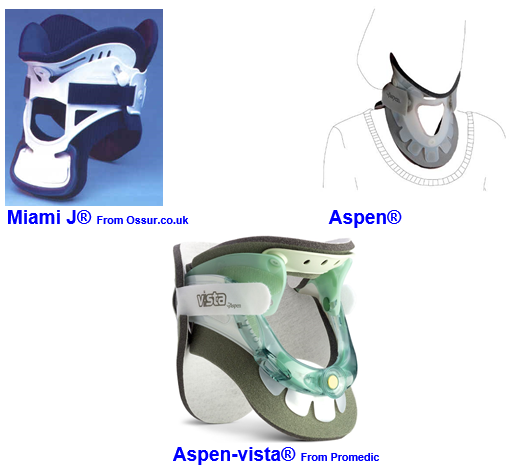
Introduction
This leaflet has been produced to give you information about your neck collar. Most of your questions should have been answered by this leaflet. It is not meant to replace discussion between you and your physiotherapist, nurse or neurosurgeon, but may act as a starting point for discussion. If after reading this leaflet, you require further explanation please discuss this with a member of the neurosurgical team.
Your consultant should have explained the reason for having to wear your hard neck collar. This leaflet is designed to provide you with information on how to apply and remove your neck collar and advises on cleaning and hygiene.
Your physiotherapist or nurse will also teach you individually how to take care of your collar and practice how to use the collar before you are discharged. Any problems or concerns you may have can be directed at the physiotherapist or nurse looking after you.
What is a hard collar and why do I need it?
A hard collar is a device designed to limit movement of your neck. It is most commonly used to manage spinal fractures but can also be used for other reasons such as supporting your neck after surgery.
The collar will maintain your neck in the proper position while it is healing. Not being able to turn or shake your head may seem unusual, but limiting the motion of your neck is an important part of your treatment and will prevent further damage.
Can there be complications with wearing a hard collar?
The collar does not prevent all movement within your neck it just limits it. It is important you are aware of your posture and ensure the collar is fitted tight enough to give your neck the support it needs.
It is important the collar is removed daily to be able to wash, dry and check your skin. If the collar is not on tight enough or not cleaned it can rub and cause pressure sores or skin irritation.
Wearing a collar may cause some weakness of the muscles around your neck, as the collar will essentially be doing some of the work of these muscles. However, when you no longer require your collar you will be advised to gradually remove it and you will be provided with an exercise program to strengthen your muscles again.
Wearing and removing your collar
An experienced healthcare professional will measure and fit you into the most suitable collar for your shape and size. They will then teach you how to apply it and ensure it is fitting correctly. You will be taught and monitored on your application of it to ensure it is fitting correctly. You will be instructed how to remove your collar daily for washing, depending on your individual circumstances this maybe in the sitting or lying position. You will be advised on the most appropriate position for your condition
Removing the collar when lying down
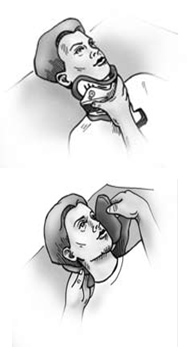 © Ossur UK © Ossur UK |
Lie flat in bed without a pillow. Keep your head in a neutral position. Do not bend your neck forward, backward or from side to side. Before removing the collar, note where the ends of the Velcro straps are. When you put the collar back on, the straps should be in the same position. Undo the Velcro straps. Remove the front of the collar and slide the back panel out from under neck. |
Replacing the collar when lying down
- Slide the back panel carefully behind the neck. Make sure it is centred evenly. Long hair should be placed outside the collar.
- Flare the sides of the front panel, slide it up the chest wall and scoop it up under the chin ensuring it is central.
- The sides of front section of the collar should be directed up to fit snugly over the shoulders and wrap around to the back of the neck.
Attach the back straps to the front, one at a time until they are in the original position.
Removing the collar when sitting
You MUST have permission from your doctor to do this.
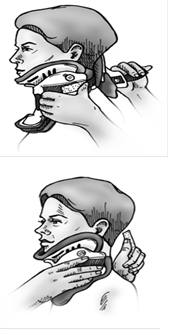 © Ossur UK |
Sit up straight in a firm chair in front of a mirror.
Keep your head and neck in a neutral position (nose in-line with belly button, chin level). Do not bend your neck forward, backward or side- ways. Be very careful not to move your neck while this is done. Remove the collar by undoing the Velcro straps. |
Replacing the collar when sitting
- Place the back panel behind the neck; make sure it is centred evenly.
- Attach the back straps loosely to the front panel ensuring the chin is sitting on top of the chin rest.
- While holding the front securely, curl the ends snugly against the patient’s neck.
- Alternately tighten the straps, one at a time, until they are in the original position.
Moving from lying to sitting up
Roll onto your side and swing your legs over the edge of the bed, whilst pushing up with your arms (see diagram below).
Please note the following:
- If you are sitting in preparation to stand please sit for a moment before standing to ensure you do not become dizzy.
©Physiotec
Cleaning
- Clean the front and back panels of the collar and replace the soiled pads with clean ones as directed below.
- Peel the soiled, pads off. Look carefully at the shape as you remove them so that you can reposition the clean pads properly.
- The pads attach with Velcro.
- Wash the pads with mild facial soap and water.
- DO NOT use bleach or harsh detergents.
- Thoroughly rinse the pads with clean water.
- Wring out the excess water and squeeze in a towel.
- Lay the pads out flat to air dry. It should take less than 60 minutes for them to dry.
- Wipe the plastic collar shell clean with mild soap and water.
To re-attach the replacement pads
- Fold the pads in half then centre the pad in the shell.
- Attach each pad in the same way.
- Adjust pads as needed to make sure no plastic touches the skin.

© Ossur UK
Important information
Please note the following:
- The collar should be tight but comfortable. If the collar is not on tight enough it will not support your injury and you may experience pain or risk further damage to your neck. If worn too loose it may also rub and can cause skin soreness and irritation.
- The collar should be kept on at all times unless you have received different instructions from your nurse, physiotherapist or consultant. It should be removed at least once daily for washing and checking your skin and exchanging the pads for clean ones.
- The collar will only limit movement within your neck, not eliminate it completely. It is important that you monitor your posture to prevent slouching, and avoid any heavy lifting and carrying.
- The pads within the collar are removable and can be hand washed. They should be fully dry prior to wearing them and the collar should not be worn without them.
- Bathing and showering are not permitted unless you are given special instruction from your consultant. Showering may be permitted but you must discuss this with your healthcare team.
- If you feel you may need guidance with washing and dressing technique please discuss this with the Occupational Therapist on the ward prior to discharge.
If you have any problems with the collar please do not hesitate to contact the Specialist nurses or physiotherapy team on the number overleaf.
General advice
Walking
Initially after your hospital admission your neck may be sore as you move; this may increase over the first couple of days but will then improve. You should aim to walk short distances little and often to ensure your muscles do not stiffen up. Once you are home try to increase the distance you walk daily always paying attention to your posture.
It is important to strike a balance between periods of activity and inactivity. Inactivity can be just as harmful to your back and neck as over-activity.
Sitting
Whilst sitting out in a chair you should ensure a good upright posture. You should avoid standing still or sitting for prolonged periods as this will cause your back to stiffen and your posture to deteriorate. Avoid sitting in soft low chairs as this will cause your back posture to become rounded and put added pressure on your neck.
Lying
A good firm support is usually desirable; a mattress that is too soft will provide you with little support. You can use a pillow for comfort but try to avoid using more than two as this may cause added stress to your neck. You are free to move around in bed but you must ensure, where possible, that your position is not twisted.
Work
Returning to work will depend very much upon the individual and the type of work you do. It is important that you ask your Neurosurgeon when it is safe to return to work. Driving is not permitted while wearing the hard collar.
Lifting
Avoid lifting heavy objects and also holding items at arm’s length away from your body. Always use a correct lifting technique, bending at the knees and not at your back (see diagram below). Avoid bending, twisting or leaning movements.
Discharge and follow-up
Before you are discharged from hospital you will need to be able to apply and remove your collar without the assistance of a healthcare professional. Often patients manage by themselves but if you need to apply your collar when laid down, we often teach family members and carers how to help apply and remove the collar for you.
You will also need to be able to sit comfortably in the collar, get yourself in and out of bed, walk short distances and be able to walk up and down a flight of stairs (if you have them at home).
You may be expected to attend for follow-up X-rays to monitor the healing process. You will be provided with dates and times for these appointments by your healthcare team. Please allow good time for these appointments as occasionally there can be delays.
When to stop wearing your collar
The collar is usually worn for a period of twelve weeks to support your neck and prevent movement around the injury site but this can alter depending on your healing rate and your consultant’s opinion.
After your final X-ray you will be advised if your bones have healed sufficiently for you to be able to remove the collar. The specialist nurse or physiotherapist will discuss this with you and give you further instruction at this point.
You will be advised to wean yourself from the collar gradually to prevent sudden strain on your neck and also to help to strengthen your neck muscles slowly to minimise discomfort. You will be given advice for this and we recommend you decrease the time spent in the collar daily over a few days.
You may feel stiff initially in the affected part of the neck when you start to wean the use of your collar. This is normal and will improve as your activity levels increase. Many patients regain the movement in their neck through natural recovery and gentle movement throughout the day. Some people require further input and will be referred to physiotherapy to help improve the mobility of the neck. This will be decided after your review on the ward.
Once out of the collar, you should try to maintain a good upright posture. The collar will have supported you up until this point and slumping will cause additional strain on your muscles. Heavy lifting should be avoided and return to activity should be controlled. If you have any specific activities you wish to return to please ask your nurse or physiotherapist for advice.
Should you require further advice on the issues contained in this leaflet, please do not hesitate to contact Ward 4, Hull Royal Infirmary on tel: 01482 674369 and ask for the specialist nurses or Hull Royal Infirmary Physiotherapy department and ask for Neurosurgery Physiotherapy on tel: 01482 674539


